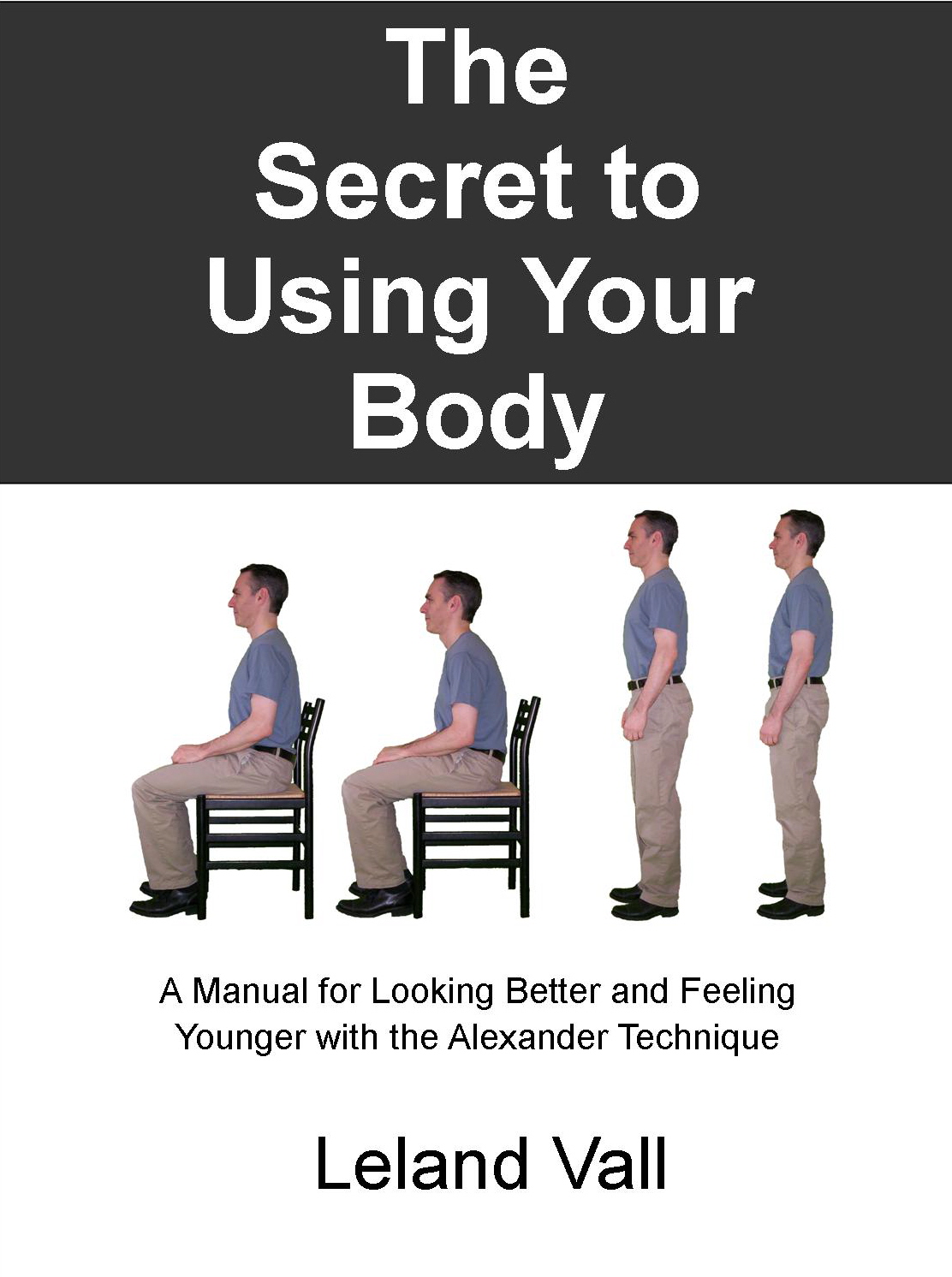Proper Head Position
Of course there is no real “position” for your head because your head moves in response to everything you do. More of a problem is that the head is often almost stuck in a position because it is held too tightly. Allowing for a softening (release of the muscles) of the back of your neck will allow your head to rise a little bit, giving more room to your spine, which in turn can make all your movements easier. Without extra movement or massage, try it now with just a thought. There is a diagram about proper head position at Tip 3.
More on your head/neck relationship.
Video: Avoid Pulling Your Head Down to Look Up
To Improve Balance, Reduce Neck Tension
Bending Forward? Lead with the Crown of Your Head
Avoid Putting Your Torso in front of Your Head
And take a moment to lie down.
Extra
Podcast from Robert Rickover – Musicians and the Alexander Technique
There are more resources available on the Free Your Neck Blog. Please write your requests in the comment section.



Hi Leland
When you lead the head forwards and up, isn’t there a risk that the natural cervical curvature get straightened – becomes more flat? This will put pressure on the discs.
Thanks Alex
It is not that the head is “put” into a forward and up position. It is instead the avoidance of pulling the head back and down that allows the head to rise on its own in a forward and up direction.
I have neck issues and I was recently told to check my neck placement I should stand against a wall. The back of my head should touch along with the shoulder blades and loser back. When I do that, my neck feels extremely uncomfortable and now my neck is sore from trying to hold it this way. I’m trying to keep my neck over my spine.
Is this a bad way to check my neck position? I think my neck is so sore I cannot feel a release with the technique?
I wouldn’t do that. You might try some Alexander Technique lessons or you can look at my manual. http://www.freeyourneck.com/secret-to-using-your-body/
Leland
Leland,
I have a feeling this will not get to you since the post was from 3 years ago. That being said, I’m hoping you can tell me why holding your head in proper position is called “softening.” It seems contrary to call it that because the less ideal way, jutting it forward, seems to flex the neck in a softened way, compared to holding it straight, e.g. in its ideal position, is an elongated or “stiffer” position.
Hi Lesley,
You are misunderstanding the post. Most people tend to pull their head backward and downward toward the back of the neck. The jutting chin is a result of the whole head being pulled back and down. As this pulling is moderated (the back of the neck softened), the back of the head tends to rise, causing the whole head to rotate forward and up. With this rotation of the whole head, the jutting of the chin is also moderated. It is important to note that this is not a new “position” for the head. It is a release of the head through a softening or release of the muscles that hold it.
Leland
It is not important to know whether or not your neck is free or “soft”. The relationship between your head, neck, and back changes constantly so its quality can’t ever be defined. Instead, the idea is simply to allow for the neck to be free, or soft, no matter your judgement of its condition. Your skill will improve as you explore this idea.
sir,
good sensory educational tip.
but,
i have a question for you.
even the neck is soft, i noticed my back is down. why?
( you may ask the question , of
how you know your neck soft?
ans : iam keeping my finger and pressing the muscles of the neck, but they are soft. but my back my pelvis is tight and down.)
wether your message in the vedio satisfies the neck free.
how i can know my neck is free?
please post for beloved viewers of you.
thank you.